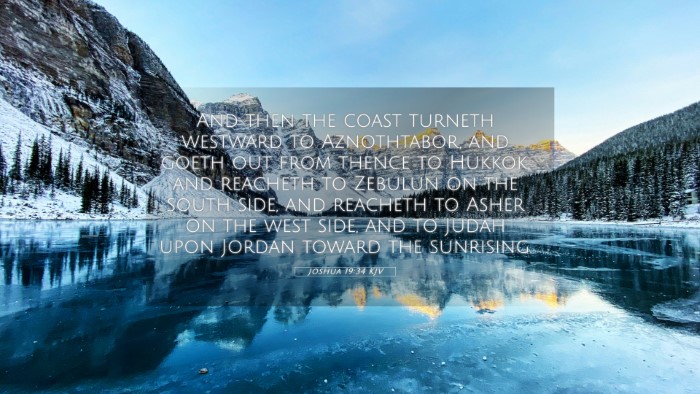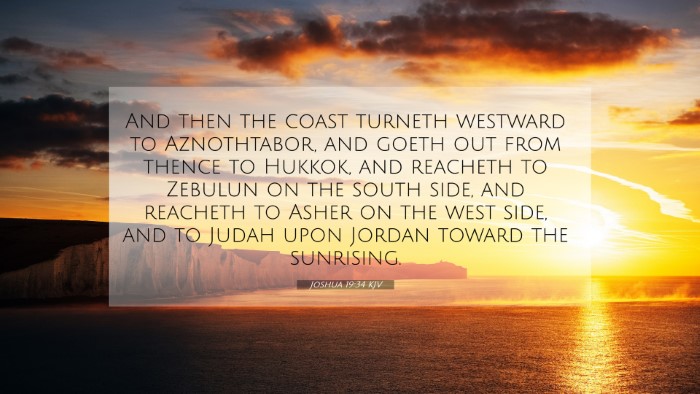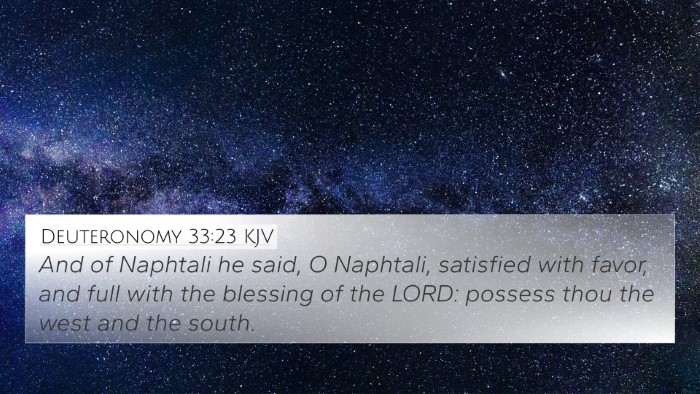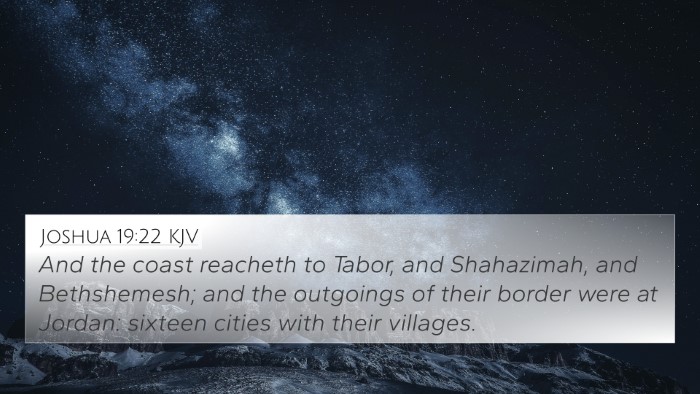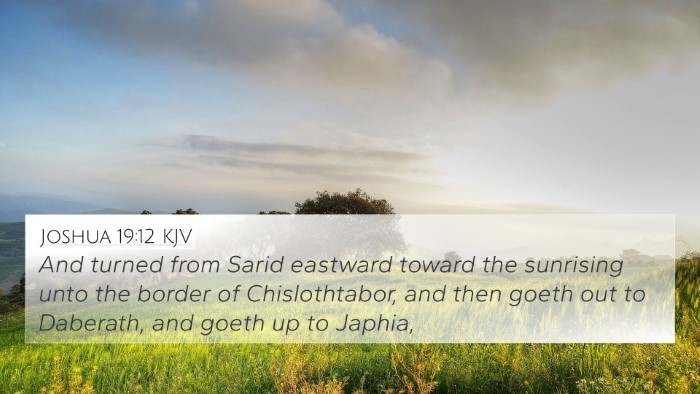Understanding Joshua 19:34
Joshua 19:34 states: “And the coast turned about the west side southward unto Aznothtabor, and went out from thence toward Hukkok, and reached to Zebulun on the south side, and reacheth to Asher on the west side, and to Judah upon Jordan toward the sunrising.” This verse describes the geographical boundaries of the tribe of Naphtali.
Geographical Significance
In this verse, the delineation of territory holds great significance, as it reflects the fulfillment of God’s promise to the Israelites about their inheritance in the Promised Land. The mention of locality is crucial in understanding the historical context of the Israelites and their settlement patterns.
Thematic Connections
This scripture can be seen in a broader context of biblical geography and the importance it holds within the narrative of the Israelites. The boundaries laid out for each tribe serve as markers of God’s provision and the structure of society within Israel.
Commentary Insights
- Matthew Henry: He highlights that the boundaries provide not only physical delineation but also a sense of identity for the tribes. It underscores the importance of land in the promise made to Abraham and the subsequent generations.
- Albert Barnes: Barnes emphasizes that the detailed description lends support to the historical accuracy of the narrative. Each boundary is significant, marking not only the territory but also the positioning of the tribes in relation to each other and their enemies.
- Adam Clarke: Clarke brings to attention the strategic importance of each location mentioned, linking the territories to the historical military campaigns and interactions of the tribes.
Bible Verse Cross-References
For a comprehensive understanding of Joshua 19:34, consider the following cross-references that connect this verse to other significant biblical narratives:
- Joshua 13:23: Discusses the portion of land assigned to the tribe of Reuben, highlighting the importance of territorial division.
- Judges 1:33: Addresses the challenges faced by the tribe of Naphtali in securing their territory, providing historical context.
- Deuteronomy 3:13: Refers to the land allocation for the tribes east of the Jordan, contributing to understanding of territorial rights.
- 1 Chronicles 12:34: Lists warriors from Naphtali, linking the tribe’s identity with both military prowess and land ownership.
- Matthew 4:13-16: Notes the fulfillment of prophecy regarding Naphtali in the New Testament, pointing to the geographical significance.
- Genesis 49:21: Jacob’s blessing over Naphtali, which illustrates the character and future of the tribe.
- Joshua 19:32-38: Details the inheritance of Naphtali further, creating a deeper understanding of their land allocation.
Connections Between Bible Verses
By engaging in a comparative Bible verse analysis, one can see thematic parallels between this passage and others that address land inheritance, the tribes of Israel, and God's promises. Scholars often utilize tools for Bible cross-referencing to unearth these connections, enhancing the study of scripture and understanding of biblical themes.
Application
The study of Joshua 19:34 and its implications can help contemporary believers recognize the importance of God's promises in the past and their relevance today. Just as the tribes were given specific territories, individuals today can reflect on the unique call and purpose God has for them in their lives.
Conclusion
In conclusion, Joshua 19:34 serves as a pivotal verse that reflects God’s faithfulness in fulfilling His promises to Israel. Through the lens of various commentaries and cross-referencing biblical texts, one gains a deeper appreciation of the scripture’s historical context, its theological significance, and its practical applications for modern-day believers.

